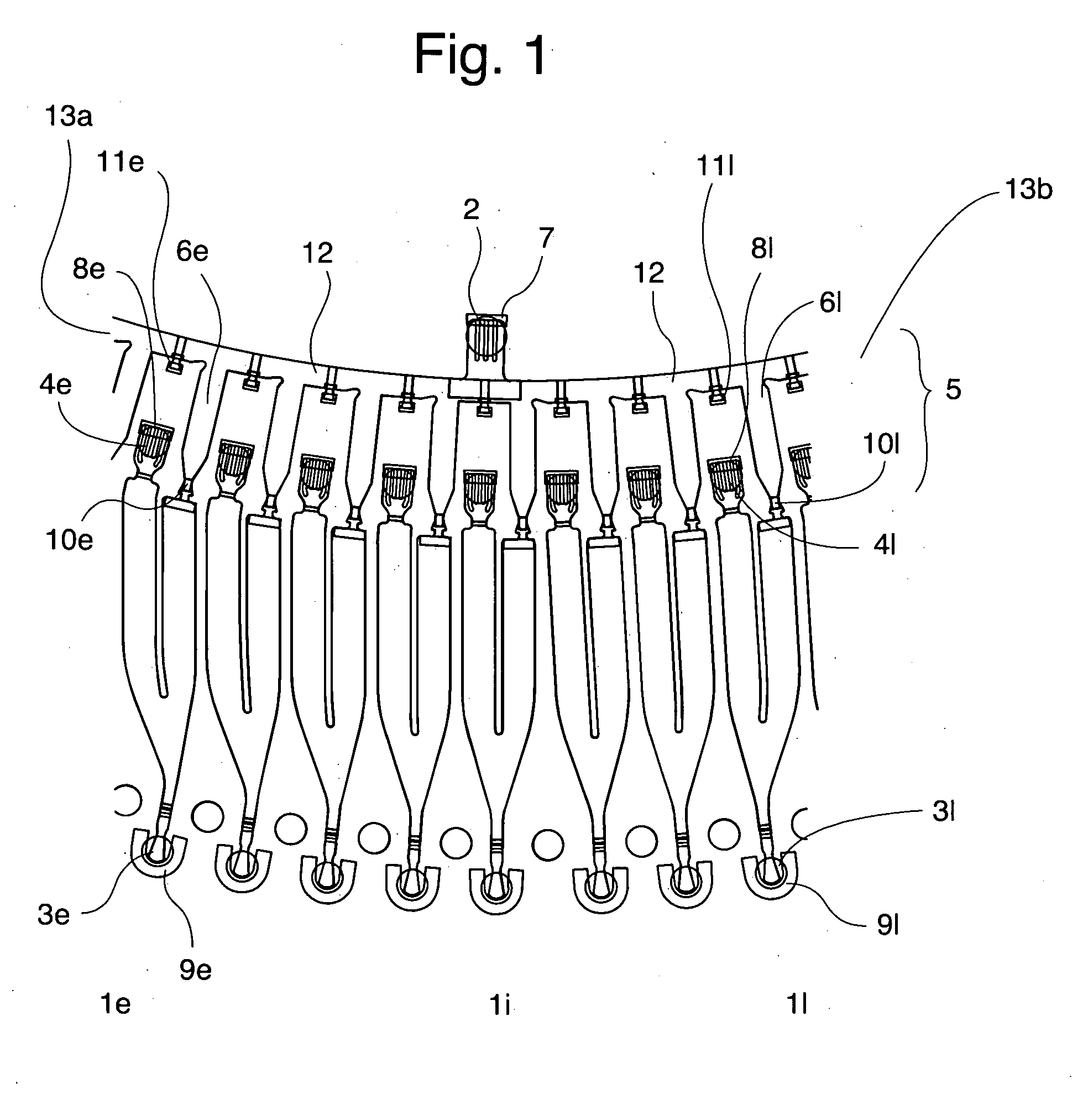Fluidic functions based on non-wettable surfaces
a technology of fluoropolymer and non-wettable surface, which is applied in the direction of immunoassays, material testing goods, withdrawal sample devices, etc., can solve the problems of negative affecting the flow-controlling function of a local non-wettable surface area and the risk of insufficient function, so as to reduce the risk of failure and increase the adhesion of fluoropolymers.
- Summary
- Abstract
- Description
- Claims
- Application Information
AI Technical Summary
Benefits of technology
Problems solved by technology
Method used
Image
Examples
example 1
Manufacture of Smooth Innovative Non-Wettable Surfaces
MATERIALSChemicalManufacturerDescriptionCytonix ™ PFC-602ACytonix2% fluoroaliphatic polymerin HFE-7100Teflon ™ NP 2400DupontPoly[4,5-difluoro-2,2-bis(tri-fluoromethyl)-1,3-dioxole-co-tetrafluoroethyleneHFE ™-71003MFluorinated solventFC ™-753MFluorinated solvent1H,1H,2H,2H-perfluoro-AldrichFluorinated methacrylatedecylmethacrylate (C10F)MonomerEsacure ™ TZTLambertiUV-initiatorEQUIPMENTInstrumentManufacturerDescriptionGyrolab ™ WorkstationGyros ABWO 02075312,PCT / SE2004 / 000440,PCT / SE2004 / 000441 (all ofGyros AB).PS 500Plasma SciencePlasma reactorEfsen 500W Hg-lampEfsenUV-lamp
Methods
Microfluidic device: The device was in the form of a circular disc of the same size as a conventional CD. The microchannel structures were in principle of the same design and function in the same way as the structures in FIGS. 7a and b in WO 02075775 (which is incorporated herein by reference in its entirety). The main difference is that the CD used to...
example 2
Preparation of Rough Non-Wettable Surfaces
0.4-2.0% (w / w) Aerosil™ R972 methylated silica colloids (DeGussa, d=11 nm) were added to a 0.05% solution of Teflon-AF™ 2400 (DuPont Polymers, DE, USA). The mixture was applied by spraying or dipping onto Zeonor™ 1420R (Zeon Corp., Japan) which had been surface treated with an oxygen plasma (Plasma Electronic, Germany). The resulting surfaces had advancing / receding water contact angles of 165-170° / 130-170°.
2% (w / w) Aerosil™ R972 was added to PFC602A (Cytonix Corp., MD, USA), which is a 2% solution of polyperfluorooctylmethacrylate in HFE-7100 (3M Belgium N.V.). Sprayed or dipped surfaces had advancing / receding water contact angles of 169-174° / ˜165°.
The adhesion of these coatings to oxygen plasma-treated Zeonor™ could be greatly improved by mixing, for example 2% PFC602A in a 1:1 ratio with perfluorodecylmethacrylate and 0.1-0.4% Esacure™ TZT (Lamberti, Italy) and 1% Aerosil™ R972. The mixture required the addition of acetone (10%) in o...
PUM
| Property | Measurement | Unit |
|---|---|---|
| roughness | aaaaa | aaaaa |
| water contact angles | aaaaa | aaaaa |
| water contact angles | aaaaa | aaaaa |
Abstract
Description
Claims
Application Information
 Login to View More
Login to View More - R&D
- Intellectual Property
- Life Sciences
- Materials
- Tech Scout
- Unparalleled Data Quality
- Higher Quality Content
- 60% Fewer Hallucinations
Browse by: Latest US Patents, China's latest patents, Technical Efficacy Thesaurus, Application Domain, Technology Topic, Popular Technical Reports.
© 2025 PatSnap. All rights reserved.Legal|Privacy policy|Modern Slavery Act Transparency Statement|Sitemap|About US| Contact US: help@patsnap.com



